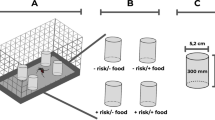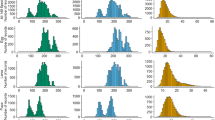Abstract
The endosymbiotic bacteria Wolbachia are widespread in natural populations of Drosophila melanogaster, which is a cosmopolitan and synanthropic species. Various aspects of Wolbachia infection are studied in many arthropod species, including fruit flies. However, the influence of climatic factors on the level of Wolbachia infection in natural populations of fruit flies has not been studied in detail. The influence of mean temperature, precipitation, and potential evaporation was investigated on Wolbachia infection rates in ten D. melanogaster populations (collected in Europe) and newly obtained estimates were combined with the data from other studies for different continents and for different climatic zones (280 populations, 10 806 isofemale lines). The effect of climatic factors on the infection frequency was revealed. The highest infection rates are observed in the mean annual temperature range of 20–25°C, which corresponds to fly rearing conditions in the laboratory. The clinal distribution of Wolbachia infection rates in the Eurasian fruit fly populations was described. Logistic regression models showed that climatic factors have a stronger impact on bacterial infection rates within climatic zones rather than continents.






Similar content being viewed by others
REFERENCES
O’Neill, S.L., Werren, J.H., and Hoffmann, A.A., Influential Passengers: Inherited Microorganisms and Arthropod Reproduction, Oxford University Press, 1997.
Teixeira, L., Ferreira, A., and Ashburner, M., The bacterial symbiont Wolbachia induces resistance to RNA viral infections in Drosophila melanogaster,PLoS Biol., 2008, vol, 6, no. 12, e1000002.
Serga, S., Maistrenko, O., Rozhok, A., Mousseau, T., and Kozeretska, I., Fecundity as one of possible factors contributing to the dominance of the wMel genotype of Wolbachia in natural populations of Drosophila melanogaster,Symbiosis, 2014, vol. 63, no. 1, pp. 11–17.
Hoffmann, A.A., Clancy, D.J., and Merton, E., Cytoplasmic incompatibility in Australian populations of Drosophila melanogaster,Genetics, 1994, vol. 136, no. 3, pp. 993–999.
Riegler, M., Sidhu, M., Miller, W.J., and O’Neill, S.L., Evidence for a global Wolbachia replacement in Drosophila melanogaster, Curr. Biol., 2005, vol. 15, no. 15, pp. 1428–33.
Ilinsky, Y.Y. and Zakharov, I.K., The endosymbiont Wolbachia in Eurasian populations of Drosophila melanogaster,Russ. J. Genet., 2007, vol. 43, no. 7, pp. 748–756.
Richardson, M.F., Weinert, L.A., Welch, J.J., Linheiro, R.S., Magwire, M.M., Jiggins, F.M., and Bergman, C.M., Population genomics of the Wolbachia endosymbiont in Drosophila melanogaster, PLoS Genet., 2012, vol. 8, no. 12, e1003129.
Kriesner, P., Conner, W.R., Weeks, A.R., Turelli, M., and Hoffmann, A.A., Persistence of a Wolbachia infection frequency cline in Drosophila melanogaster and the possible role of reproductive dormancy, Evolution, 2016, vol. 70, no. 5, pp. 979–997.
Serga, S.V. and Kozeretskaya, I.A., The puzzle of Wolbachia spreading out through natural populations of Drosophila melanogaster,Zh. Obshch. Biol., 2013, vol. 74, no. 2, pp. 99–111.
Corbin, C., Heyworth, E.R., Ferrari, J., and Hurst, G.D., Heritable symbionts in a world of varying temperature, Heredity, 2017, vol. 118, no. 1, p. 10–20.
Iturbe-Ormaetxe, I., Walker, T., and O’Neill, S.L., Wolbachia and the biological control of mosquito-borne disease, EMBO Rep., 2011, vol. 12, no. 6, pp. 508–518.
Rubel, F., Brugger, K., Haslinger, K., and Auer, I., The climate of the European Alps: shift of very high resolution Köppen–Geiger climate zones 1800–2100, Meteorologische Zeitschrift, 2017, vol. 26, no. 2, pp. 115–25. doi 10,1127/metz/2016/0816
O’Neill, S.L., Giordano, R., Colbert, A.M., Karr, T.L., and Robertson, H.M., 16S rRNA phylogenetic analysis of the bacterial endosymbionts associated with cytoplasmic incompatibility in insects, Proc. Natl. Acad. Sci. U. S. A., 1992, vol. 89, no. 7, pp. 2699–2702.
Zhou, W., Rousset, F., and O’Neill, S., Phylogeny and PCR-based classification of Wolbachia strains using wsp gene sequences, Proc. R. Soc. London, Ser. B, 1998, vol. 265, no. 1395, pp. 509–515.
Team, R.C., R: A Language and Environment for Statistical Computing, 2018.
Gora, N.V., Kostenko, N.D., Maistrenko, O.M., Serga, S.V., and Kozeretska, I.A., The lack of correlation between the level of radioactive contamination and infection with Wolbachia in natural populations of Drosophila melanogaster from Ukraine, J. V.N. Karazin Kharkiv Nat. Univ. Ser. Biol., 2016, vol. 26, pp. 60–64.
Gora, N.V., Serga, S.V., Maistrenko, O.M., Protsenko, O.V., and Kozeretska, I.A., The relationship of Wolbachia infection and different phenotypes in the Drosophila melanogaster natural populations from radioactively polluted and clear areas in Ukraine, Visn. Ukr. Tov. Genet. Sel., 2018, vol. 16, no. 2, pp. 227–234.
Gora, N.V., Serga, S.V., Maistrenko, O.M., and Kozeretska, I.A., Dynamics of frequencies of Wolbachia genotypes in Drosophila melanogaster population from Uman’ under influence of climate factors, Microbiol. Biotechnol., 2019, vol. 1, pp. 6–15.
Hoffmann, A.A., Hercus, M., and Dagher, H., Population dynamics of the Wolbachia infection causing cytoplasmic incompatibility in Drosophila melanogaster,Genetics, 1998, vol. 148, no. 1, pp. 221–231.
Montenegro, H., Solferini, V.N., Klaczko, L.B., and Hurst, G.D.D., Male-killing Spiroplasma naturally infecting Drosophila melanogaster,Insect. Mol. Biol., 2005, vol. 14, no. 3, pp. 281–287.
Verspoor, R.L., Haddrill, P.R., Genetic diversity, population structure and Wolbachia infection status in a worldwide sample of Drosophila melanogaster and D. simulans populations, PLoS One, 2011, vol. 6, no. 10, e26318.
Ventura, I.M., Martins, A.B., Lyra, M.L., Andrade, C.A., Carvalho, K.A., and Klaczko, L.B., Spiroplasma in Drosophila melanogaster populations: prevalence, male-killing, molecular identification, and no association with Wolbachia,Microb. Ecol., 2012, vol. 64, no. 3, pp. 794–801.
Early, A.M., Clark, A.G., Monophyly of Wolbachia pipientis genomes within Drosophila melanogaster: geographic structuring, titre variation and host effects across five populations, Mol. Ecol., 2013, vol. 22, no. 23, pp. 5765–5778.
Huang, W., Massouras, A., Inoue, Y., Peiffer, J., Ramia, M., Tarone, A.M., and Magwire, M.M., Natural variation in genome architecture among 205 Drosophila melanogaster Genetic Reference Panel lines, Genome Res., 2014, vol. 24, no. 7, pp. 1193–1208.
Webster, C.L., Waldron, F.M., Robertson, S., Crow-son, D., Ferrari, G., Quintana, J.F., and Lazzaro, B.P., The discovery, distribution, and evolution of viruses associated with Drosophila melanogaster,PLoS Biol., 2015, vol. 13, no. 7, e1002210.
Bykov, R.A., Yudina, M.A., Gruntenko, N.E., Zakharov, I.K., Voloshina, M.A., Melashchenko, E.S., and Ilinsky, Y.Y., Prevalence and genetic diversity of Wolbachia endosymbiont and mtDNA in Palearctic populations of Drosophila melanogaster,BMC Evol. Biol., 2019, vol. 19, no. 1, p. 48.
Roshina, N., Symonenko, A., Krementsova, A., Tsybul’ko, E.A., Alatortsev, V.E., Pasyukova, E.G., and Mukha, D., Drosophila melanogaster inhabiting northern regions of European Russia are infected with Wolbachia which adversely affects their life span, Vavilov J. Genet. Breed., 2018, vol. 22, no. 5, pp. 568–573.
Harris, I.P.D.J., Jones, P.D., Osborn, T.J., and Lister, D.H., Updated high-resolution grids of monthly climatic observations—the CRU TS3,10 Dataset, Int. J. Climatol., 2014, vol. 34, no. 3, pp. 623–642.
Hijmans, R.J., Raster: Geographic Data Analysis and Modeling, 2019.
Pierce D., ncdf4: Interface to Unidata netCDF (Version 4 or Earlier) Format Data Files, 2019.
Charlesworth, J., Weinert, L.A., Araujo-Jnr, E.V., and Welch, J.J., Wolbachia, Cardinium and climate: an analysis of global data, bioRxiv, 2018, vol. 490284.
Dillon, M.E., Wang, G., Garrity, P.A., and Huey, R.B., Review: thermal preference in Drosophila,Therm. Biol., 2009, vol. 34, no. 3, pp. 109–119.
Truitt, A.M., Kapun, M., Kaur, R., and Miller, W.J., Wolbachia modifies thermal preference in Drosophila melanogaster, Environ. Microbiol., 2018.
Perrot-Minnot, M.J., Guo, L.R., and Werren, J.H., Single and double infections with Wolbachia in the parasitic wasp Nasonia vitripennis effects on compatibility, Genetics, vol. 143, no. 2, pp. 961–972.
Rahimi-Kaldeh, S., Ashouri, A., Bandani, A., and Tomioka, K., The effect of Wolbachia on diapause, fecundity, and clock gene expression in Trichogramma brassicae (Hymenoptera: Trichogrammatidae), Dev. Genes Evol., 2017, vol. 227, no. 6, pp. 401–410.
Ruang-Areerate, T., Kittayapong, P., McGraw, E.A., Baimai, V., and O’Neill, S.L., Wolbachia replication and host cell division in Aedes albopictus,Curr. Microbiol., 2004, vol. 49, no. 1, pp. 10–12.
Nunes, M.D., Nolte, V., and Schlutterer, C, Non-random Wolbachia infection status of Drosophila melanogaster strains with different mtDNA haplotypes, Mol. Biol. Evol., 2008, vol. 25, no. 11, pp. 2493–2498.
Ilinsky, Y., Coevolution of Drosophila melanogaster mtDNA and Wolbachia genotypes, PLoS One, 2013, vol. 8, no. 1, pp. 1–11.
ACKNOWLEDGMENTS
We would like to thank Pavel Kovalenko, a student at Taras Shevchenko National University of Kyiv, and Oleksii Bilousov, a researcher at Columbia University, for their assistance in collecting flies from Uman and Lausanne, respectively.
Funding
This study did not receive any specific grant from funding agencies in the public, commercial, or noncommercial sectors.
Author information
Authors and Affiliations
Corresponding author
Ethics declarations
Conflict of interest. The authors declare that they have no conflict of interest.
Statement on the welfare of animals. All applicable international, national, and/or institutional guidelines for the care and use of animals were followed.
Additional information
Translated by K. Lazarev
About this article
Cite this article
Gora, N.V., Serga, S.V., Maistrenko, O.M. et al. Climate Factors and Wolbachia Infection Frequencies in Natural Populations of Drosophila melanogaster. Cytol. Genet. 54, 189–198 (2020). https://doi.org/10.3103/S0095452720030044
Received:
Revised:
Accepted:
Published:
Issue Date:
DOI: https://doi.org/10.3103/S0095452720030044




